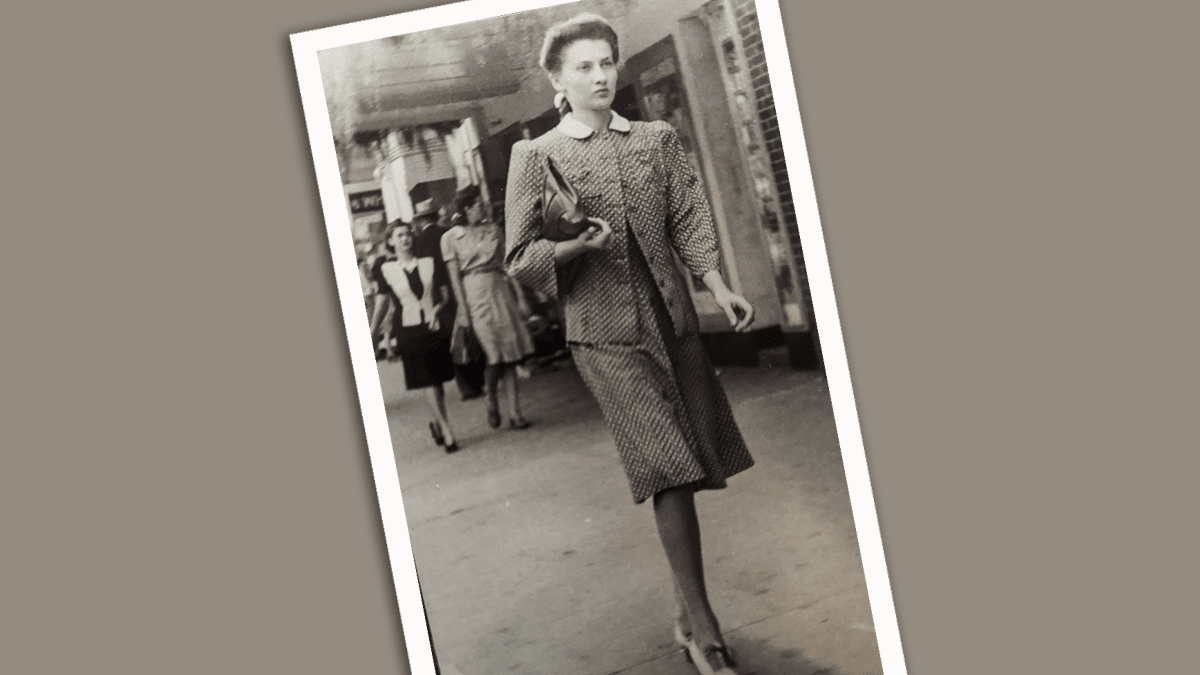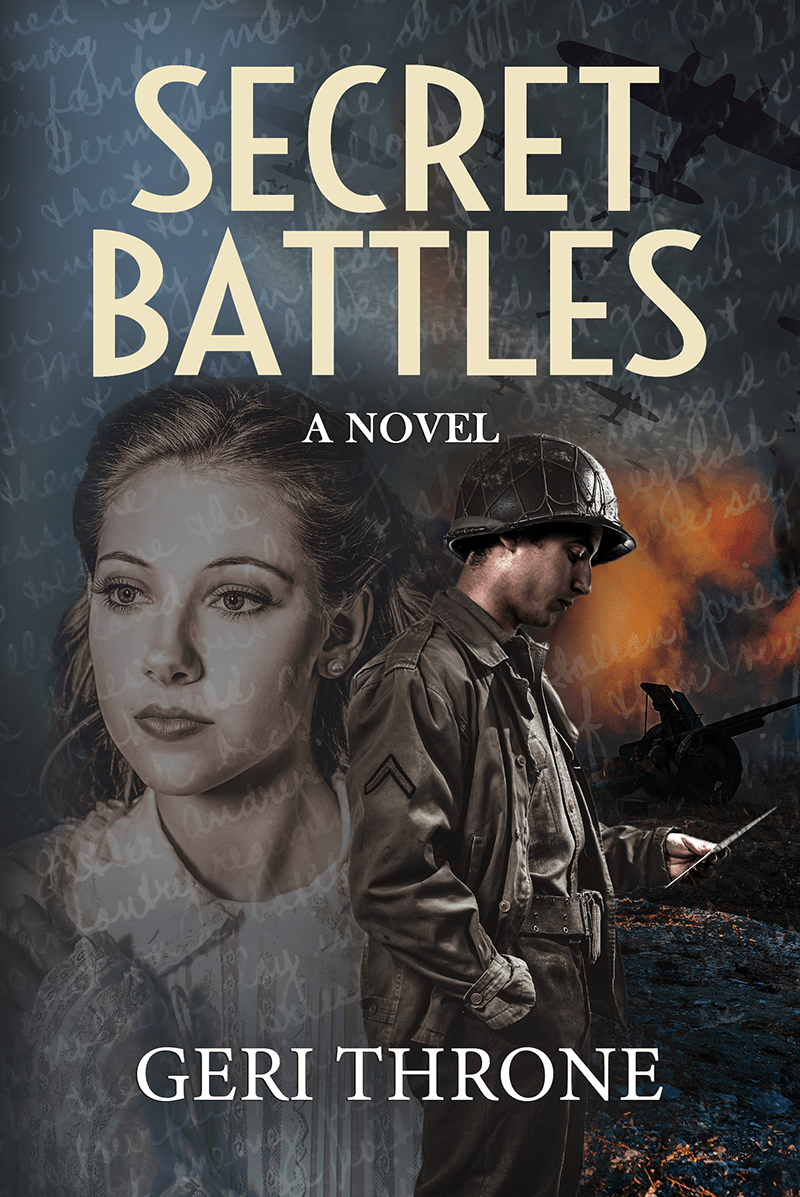
Although money was tight in the early 1940s, my mother still strived to be fashionable. Her outfit in this photo reflects the era’s most popular styles: padded, puffed shoulders; buttoned down jacket; knee-length A-line skirt; sturdy shoes.
The war affected everything then, even fashion.
Frugality was expected. The military’s needs came first. If it needed a product, civilians made do with rationed quantities of the product or with substitutes. Natural fabrics and wool, for example, became hard to find because the military needed them for uniforms. In addition, Japanese silk was banned after Pearl Harbor.
Nylon, first sold commercially in 1940, might have seemed the perfect substitute for silk fabrics but its production also was diverted to the military. The synthetic material was used to make parachutes, aircraft fuel tanks, rope, flak jackets, mosquito netting and more.
In homes on tight budgets, like my mother’s, sewing machines and needles and thread came to the rescue. My mother and grandmother knew how to mend and alter clothing and add details to freshen their wardrobes.
For the fashion world, rayon was the answer. Made from chemically treated wood pulp and other plant materials, rayon grew in popularity during wartime rationing because of its ability to mimic other fabrics. It could be blended with scarce wool to make winter outfits, for example.
A new government agency called the War Production Board made sure that peacetime industries met new wartime demands. It dictated how much fabric could be used to make each piece of clothing. It prohibited drastic style changes that might tempt buyers. It rationed shoes and banned nonessential products. It even restricted the use of dyes.
As a result, hemlines went higher, pleats were rare, colors were practical and decorative details on dresses disappeared. The limited nylon supply meant a shortage of stockings. Women put tan makeup on their legs or drew lines on the backs of their legs to imitate nylon seams. Meanwhile, shoulder pads gave women’s outfits a military look. As women took factory jobs, they began wearing pants on the job and soon used them for casual wear, too.
Two-piece suits like the one my mother wore in this picture were called victory suits or utility suits. They were popular because the separate pieces could be mixed and matched or worn with different blouses to extend a wardrobe.
With such limited clothing options, women showed their individuality with elaborate hairstyles. They used waves, pin curls, pompadours and backcombing. Movie stars made Victory Rolls popular. To achieve them, women had to carefully roll strands of hair around two fingers and then secure the thick curls with bobby pins to frame the face.
Predictably, these clothing and hair styles began to fade after the war’s end in 1945, especially when Parisian fashion houses reopened in 1947. Hairstyles became less complicated. The fashion world embraced narrow shoulders, cinched waists and full skirts. Ration restrictions were a thing of the past.
